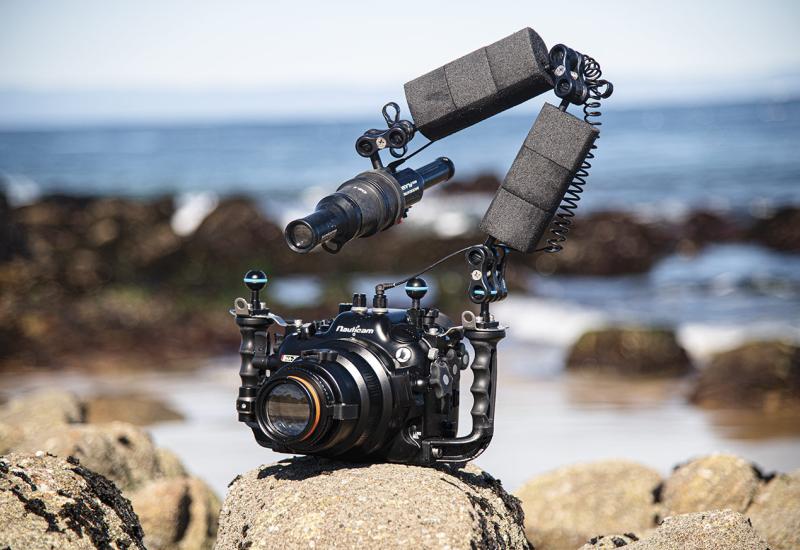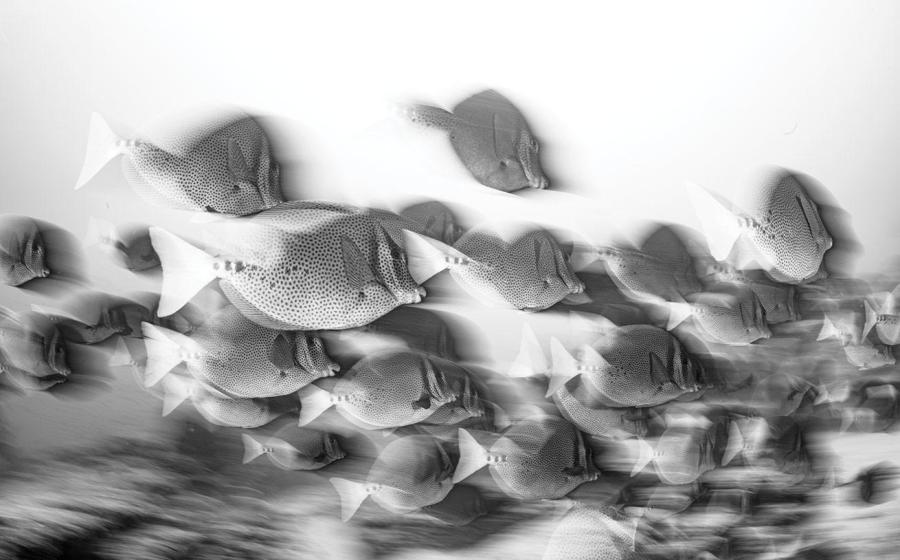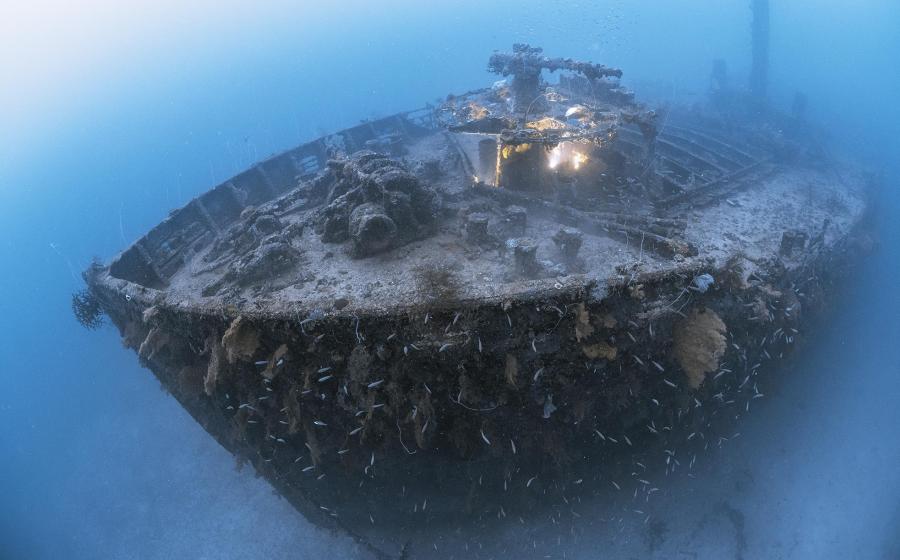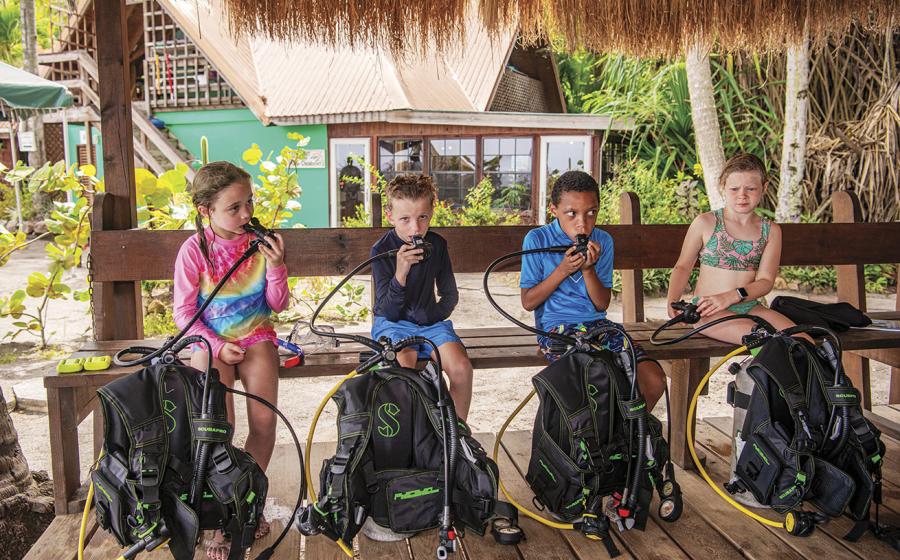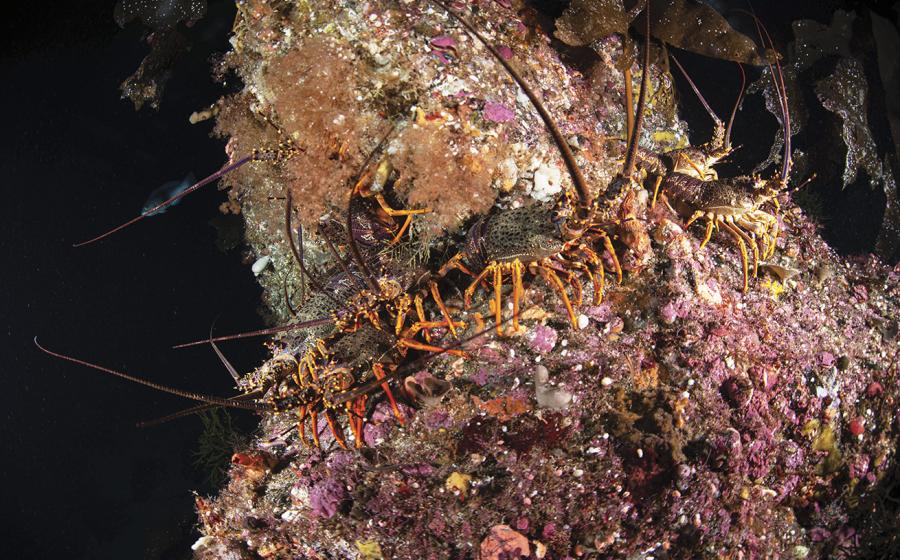Introduction to Blackwater Diving

Alex MustardA juvenile jack shelters inside a jelly on a blackwater dive in the Philippines.
Tiny phytoplankton power the ocean’s food web. These mostly single-celled microalgae proliferate in the water’s sunnier upper layers in astronomic numbers and account for roughly half of all photosynthesis on Earth, meaning the ocean provides the oxygen for every other breath we take. Life in the ocean simply wouldn’t be possible without them.
The challenge comes for the animals that want to eat phytoplankton. Because if you are a small fish or crustacean, just the right size to feast on single-celled algae, you too are bite-sized food for many types of fish, squid and other predators. So, while there is a lot of green food near the surface, it is a dangerous place to be during the day when predators can easily spot you.
Related Reading: Conserving the European Lobster
Nature’s solution was to create an incredible wildlife spectacle—the largest movement of animals on the planet, known as the Diel vertical migration. With aching bellies, billions of tiny creatures around the world head for the surface each evening, migrating hundreds of feet despite their size. Under the cover of darkness they can feast more safely, and the concentration of life in the upper ocean provides one of the most fascinating diving experiences: blackwater.
Blackwater is a type of night dive conducted in open water. It started in the 1980s but did not become mainstream until the past decade, thanks in part to the increasing popularity of underwater photography. A rope is hung from a buoy, and bright lights are attached at intervals to draw in plankton and provide a reference for the divers. As a diver, you slowly circle the line, checking out objects in your torch beam, hoping it might be a pelagic octopus, a larval crustacean or a juvenile fish. You and the line might drift several kilometers, but since everything floats together, you won’t feel the current. Once you acclimate, it is very relaxing.
The reason these dives fascinate is that most sea species have a pelagic larval stage. As a terrestrial species, it is natural that we consider our biology to be normal. But in reality, we are the outliers for life on this planet. Many marine species never meet their children and, for the first part of their lives, look nothing like them either. Eggs hatch and offspring don’t immediately settle down to life with the adults. Instead, they disperse with the plankton. Here, the demands of life are very different. To thrive, youngsters are often more translucent to keep them hidden, and they may even have appendages that help keep them afloat or disguised. This is the draw of blackwater photography: the chance to photograph alien-looking creatures.
The setup, settings and technique for blackwater photography are straightforward. I always try to get my camera as neutrally buoyant in the water as possible, and I dive with a focus light and spotting torch on a lanyard. Almost all blackwater shots are taken by using a closed aperture to maximize the depth of field. A midlevel ISO will help you get a good exposure without using an intense, high-power flash, so you have a reasonable recycle time. I tend to vary ISO the most on these dives, dropping it down for more solid, larger subjects and increasing it for smaller, translucent ones.
The biggest challenge here is your ability as a diver. Blackwater photography rewards supreme stability, which allows you to closely approach a subject without disturbing it with your bow wave, and to accurately and consistently frame it, which helps with composition and allows your camera’s autofocus to lock onto it.
Related Reading: Diver's Paradise Hosts Inaugural Lionfish Derby in Miami
With so much biodiversity in the great migration, blackwater is addictive because there is always another weird critter to spot. It appeals especially to photographers, but every diver should try. It is the only chance to see one of the defining features of the ocean, the largest movement of life on our planet.



